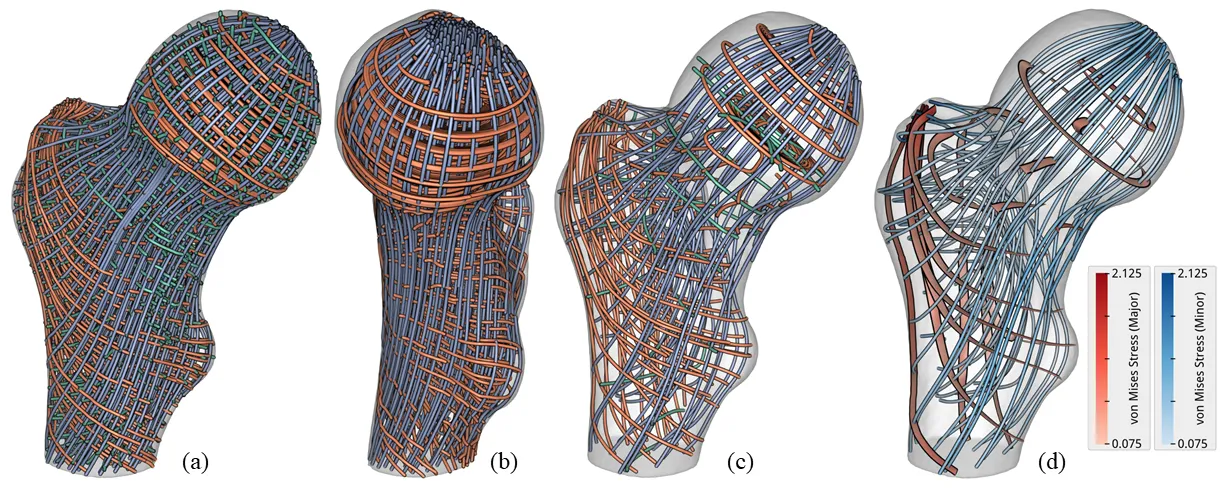3D-TSV: The 3D Trajectory-based Stress Visualizer
J Wang1, C. Neuhauser1, J Wu2, X. Gao3 & R Westermann1
1 Chair for Computer Graphics and Visualization, Technical University of Munich, Germany
2 Department of Sustainable Design Engineering, Delft University of Technology, The Netherlands
3 Lightspeed & Quantum Game Studios, Tencent America, Seattle, USA

Abstract
In this paper, we present novel algorithms for visualizing the three mutually orthogonal principal stress directions in 3D solids under load and we discuss the efficient integration of these algorithms into the 3D Trajectory-based Stress Visualizer (3D-TSV), a visual analysis tool for the exploration of the principal stress directions of 3D stress field. In the design of 3D-TSV, several perceptual problems have been solved. We present a novel algorithm for generating a space-filling and evenly spaced set of stress lines. The algorithm obtains a more regular appearance by considering the locations of lines, and enables the extraction of a level-of-detail representation with adjustable sparseness of the trajectories along a certain stress direction. A new combined visualization of two principal directions via oriented ribbons enables to convey ambiguities in the orientation of the principal stress directions. Additional depth cues have been added to improve the perception of the spatial relationships between trajectories. 3D-TSV provides a modular and generic implementation of key algorithms required for a trajectory-based visual analysis of principal stress directions, including the automatic seeding of space-filling stress lines, their extraction using numerical schemes, their mapping to an effective renderable representation, and rendering options to convey structures with special mechanical properties. 3D-TSV is accessible to end users via a C++- and OpenGL-based rendering frontend that is seamlessly connected to a MatLab-based extraction backend. The code (BSD license) of 3D-TSV as well as scripts to make ANSYS and ABAQUS simulation results accessible to the 3D-TSV backend are publicly available.
Associated publications
3D-TSV: The 3D Trajectory-based Stress Visualizer
J Wang, C. Neuhauser, J Wu, X Gao and R Westermann
Advances in Engineering Software, 2022
[Paper] [BiB] [Source Code] [Easy-use]